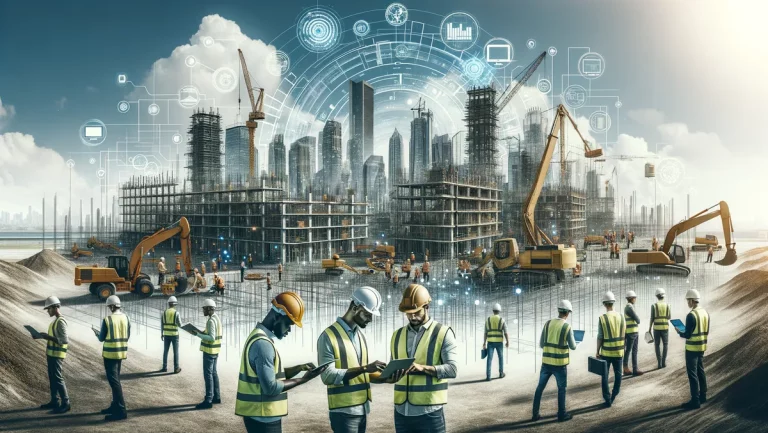Construction projects often struggle to keep track of tools and equipment as jobs grow larger and more complex. Crews move between sites, schedules change, and assets shift hands many times. Projects lose track of assets when systems, visibility, and accountability fail to keep pace with daily operations. This article explores how gaps in tracking, communication, and maintenance create blind spots that lead to loss and downtime. It also shows how outdated processes and unclear responsibility make it harder to know what assets exist, where they are, and who should manage them. 1) Inadequate asset tracking systems Many construction projects rely on basic or outdated tracking systems. Teams often use spreadsheets, paper logs, or manual checklists to record equipment and materials. These tools cannot keep up with fast-moving job sites. Manual systems increase the risk of missing or wrong information. Workers may forget to log equipment moves or update records on time. As a result, managers lose clear visibility into where assets are and who is using them. Inadequate systems also limit real-time access to data. Project leaders cannot quickly confirm asset availability across multiple sites. This gap can lead to duplicate rentals, idle equipment, or work stoppages. Older tracking tools often fail to support maintenance planning. Without accurate usage data, teams miss service schedules or inspections. Equipment may break down unexpectedly, which further disrupts project timelines. When tracking systems do not scale with project size, asset control weakens. Large projects with many tools and machines need centralized, reliable tracking. Without it, asset loss and inefficiency become more likely. 2) Lack of real-time visibility on equipment Many construction teams do not see where equipment is or how crews use it during the workday. They rely on calls, paper logs, or delayed reports. These methods lag behind real site activity. Without real-time visibility, teams miss early signs of risk. A machine may sit idle at one site while another crew rents the same item. This gap raises costs and slows schedules. Poor visibility also makes loss harder to detect. Teams may not notice theft, damage, or misplacement until days later. By then, recovery options shrink. Limited tracking affects planning and decisions. Managers struggle to assign the right tools to the right jobs at the right time. They react to problems instead of preventing them. Real-time data helps teams act faster and with more accuracy. When teams lack it, assets drift out of control across sites and projects. This issue often grows as projects scale and locations multiply. 3) Poor scheduled maintenance practices Poor scheduled maintenance causes assets to move without records. Crews pull equipment for repairs, then return it late or to a different site. Teams lose track when no one updates logs or systems. Missed maintenance also leads to breakdowns. When equipment fails, managers rush to replace it. They rent or borrow assets and skip proper check-in steps. Inconsistent schedules add to the problem. Different teams follow different plans, or none at all. Assets move between projects with no clear owner. Manual tracking makes this worse. Paper logs and spreadsheets fall out of date fast. They do not show real-time location or condition. Clear maintenance schedules help control asset flow. When teams plan service in advance and follow one system, assets stay visible and accounted for. 4) Inefficient communication among teams Construction teams work across offices, yards, and job sites. When teams share updates late or not at all, tools and equipment move without records. This gap makes assets hard to find and easy to misplace. Field crews may swap tools to keep work moving. If they fail to log the change, the office loses visibility. Paper logs, calls, and texts often miss details or arrive too late. Poor communication also causes rework and delays. When teams cannot confirm what equipment sits on site, they order or rent duplicates. This adds cost and clutters the job site. Clear asset tracking reduces these problems. Tracking labels give each item a visible ID that teams can read fast. When crews scan or note a label, they share the same data. Durability matters on busy sites. Metal labels resist weather, heat, and wear, so IDs stay readable. With durable, metal labels on equipment, teams communicate through consistent labels and keep assets accounted for. 5) Failure to update asset logs promptly Asset logs lose value when teams delay updates. Crews move tools and equipment between sites every day, and records fall behind. When logs lag, managers cannot see where assets are or who uses them. Many teams rely on manual entry at the end of a shift. Busy schedules and tight deadlines push updates aside. As a result, records reflect plans, not real conditions on the job site. Delays also affect maintenance and inspections. When logs miss recent use or damage, equipment may skip service. This increases downtime and raises safety risks without warning. Real-time visibility matters in active construction work. Several project failures show that planning alone is not enough once work begins. Without prompt updates, asset tracking breaks down and errors spread across schedules, budgets, and handovers. Over time, small delays compound. Missing or outdated entries make audits harder and increase loss, theft, and underuse. Accurate logs require timely updates to stay useful. 6) Overreliance on manual inventory methods Many construction teams still rely on paper logs, spreadsheets, or memory to track assets. These methods depend on constant updates, which often fail during busy workdays. Missed entries and outdated counts become common. Manual tracking also increases the risk of human error. Workers may record the wrong item, skip a step, or enter data late. Small mistakes add up and make asset records unreliable. Job sites change fast, but manual systems do not update in real time. Materials move between locations, crews, and projects without clear records. Managers then struggle to know what is on site and what is missing. Manual methods make it harder to spot loss or theft. Without clear history or traceability, teams cannot track when or where an asset disappeared.














